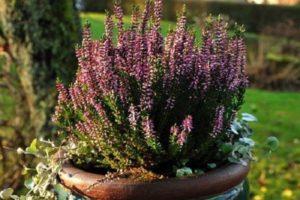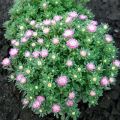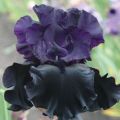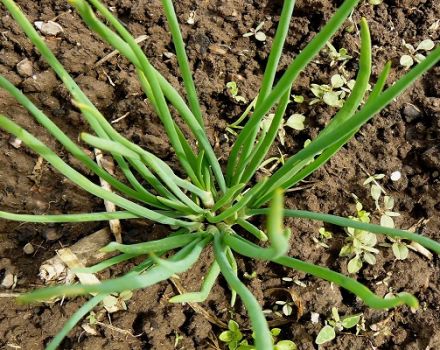Description of the plant pennisetum (pinnate) foxtail, its planting and care
Gardeners have long begun to plant on their plots not only flowers and ornamental shrubs, but also cereals. One of these cereals is the foxtail pennisetum, a spectacular plantation with fluffy spikelets of various colors. Plants are highly decorative, especially during the flowering period, for which they are loved not only by amateur flower growers, but also by landscape designers.
Description and features
Pennisetum (pinnate bristle) foxtail is a cereal plant. It is a plantation with an erect stem up to 1 meter high and narrow long leaves. The top is crowned with a spike-shaped inflorescence of beige, lilac, purple or red-brown color. During the dissolution period, it has a high decorative effect.
The inflorescence opens in late August or early September. But even with the onset of frost, the plant retains its spectacular appearance. At the same time, the color of the vegetative parts changes to yellow, but the integrity of the plantation is preserved.
Additional Information. The literal translation of pennisetum from Latin is feather and bristle.
Growing seedlings
When hardened young bushes are planted in a flower bed, the development of pennisetum will begin earlier than when sown in open ground with seeds.
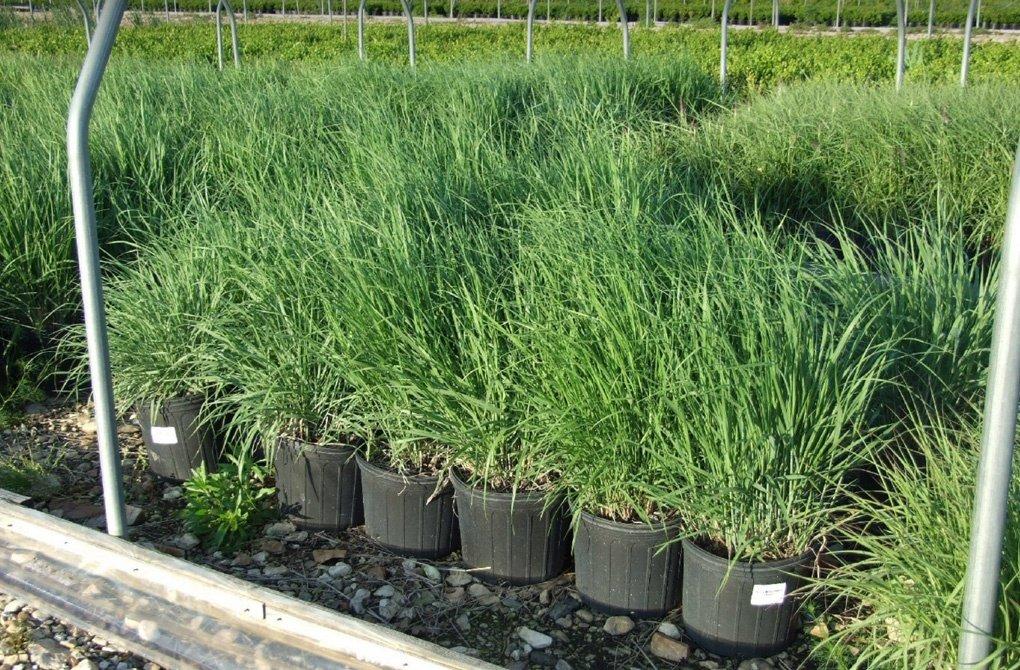
Timing
To plant pennisetum bushes in open ground, seeds are sown in early April. Then the seedlings will have time to grow and get stronger before landing in the ground. Young bushes are planted on the site in May.
Soil preparation
For the cultivation of foxtail pennisetum with seeds, loose soil is used to make it easier for the seedlings to develop. You can prepare the substrate yourself from a mixture of garden soil, peat and sand or purchase soil for seedlings at a flower shop.
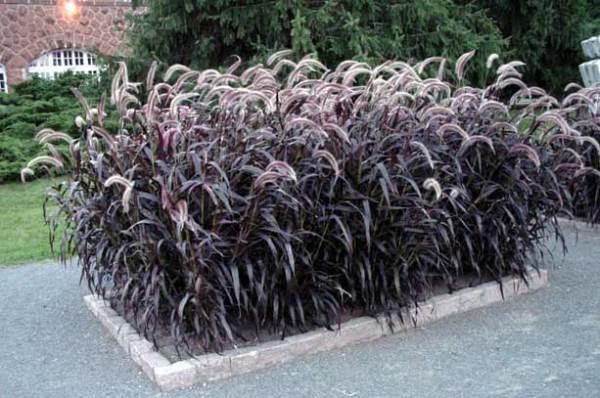
How to plant
You need to plant seeds in separate small containers, since the bushes take a long time to take root after transplanting. To do this, you can take 200 gram plastic cups or peat pots. When using peat pots, planting on the site is carried out without removing the earthy coma. Seeds spilled on the surface are buried by 2-3 millimeters.
Watering
The seeds are planted in moist soil.When the top layer dries up a little, it must be moistened with a spray bottle. Water settles for at least a day before watering.

Temperature and light conditions
Seedling pots are placed in a warm room, which is well lit by the sun. If the growing region is northern, then the containers are covered with foil or glass and illuminated with phytolamps.
Airing
The mini-greenhouse needs to be ventilated every day, while removing condensation from the glass. If this is not done, pathogenic microorganisms may appear inside the containers that harm crops. When sprouts appear, the shelter is removed.
Landing in open ground
Bushes grown in a warm room are planted in the ground after the onset of heat. To make them adapt faster, 2 weeks before planting, they are hardened, taking them out for half an hour.

When to plant
The foxtail pennisetum is planted in the open ground after the threat of frost has passed. In the southern regions it can be the end of April, in the northern regions - mid-May. By this time, the seedlings usually reach a height of 10-15 centimeters.
Seat selection
In nature, pennisetum grows in hot climates, so a well-lit sun is chosen for it. The plant does not make great demands on the composition of the soil, the main thing is that it is not too moist.
The constant presence of the roots in moisture contributes to their defeat by the fungus.
Landing scheme
Since the pennisetum is capable of growing strongly, the distance between the bushes is kept in the range of 50-90 centimeters. A dense planting is needed if a hedge needs to be organized from a plant. The depth of the planting pit is determined so that the seedlings have enough room for root development.
Advice! If the spread of the plant over the site is not planned, the planting area is fenced with slate, digging it into a depth of 50 centimeters.
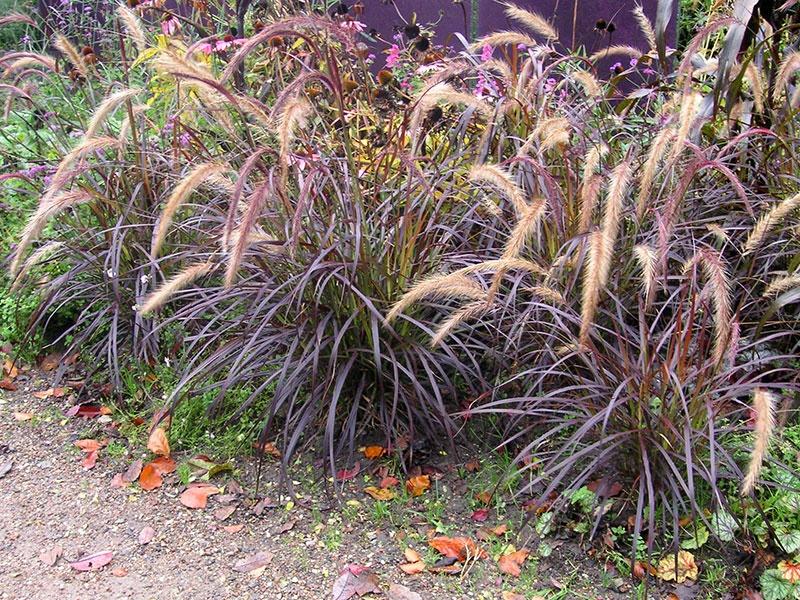
Care
Caring for the foxtail pennisetum does not take a lot of time and effort from the gardener during the season.
Watering
It is necessary to moisten the earth only if there is not enough natural precipitation. In hot, dry summers, foxtail pennisetum is watered once a week.
Loosening and weeding
While the bushes are small, the soil around them must be constantly loosened. During this procedure, air enters the roots, and they develop better. During the same period, weeding is needed, otherwise the weeds will take away sunlight and moisture from young bushes.

Top dressing
The foxtail pennisetum planted in fertile soil in the first years can not be fed. Adult bushes are fertilized in spring with organic matter, for example, humus or manure. In the summer they are spilled once a month with a complex mineral dressing.
Diseases and pests
Pennisetum is rarely affected by pests and diseases. In a too dry summer, spider mites can appear, which are easily washed off with a stream of water. Young plants can be chosen by aphids, which are removed with soapy water.
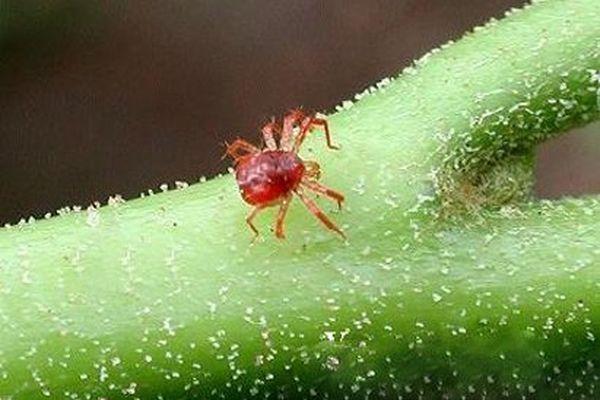
Pruning
It is not necessary to cut the stalks of the foxtail pennisetum for the winter for several reasons:
- Deadwood prevents excessive moisture in the roots.
- Keeps the kidneys from freezing.
- The site looks decorative not only in summer but also in winter.
Only damaged leaves should be cut for the winter. In the spring, the entire ground part is completely cut off so that young stems can develop.
Mulching
To keep moisture in the area of root growth in hot summer, the bushes are mulched with peat, tree bark, sawdust. In addition, mulch will keep the soil layer from crusting after rain or watering.
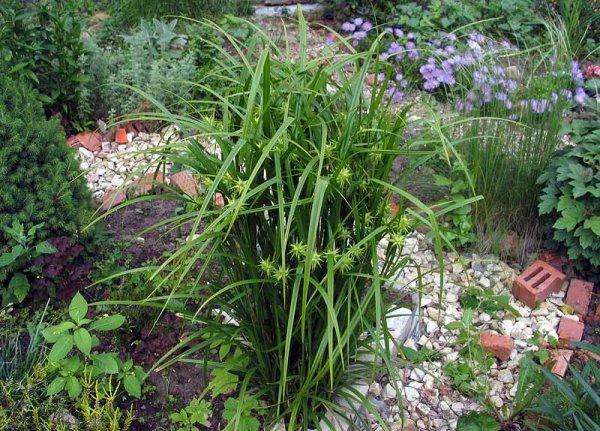
Preparing for winter
Before the onset of frost, the trunk circle is additionally sprinkled with dry foliage, and covered with a special flooring. Another necessary procedure is abundant watering of the roots, since if the ground around them is moist, they are less damaged by frost.To prevent tall stems from ducking under the pressure of snow in winter, they are tied with a rope.
Reproduction
You can breed foxtail pennisetum in the garden in 2 ways: by seeds and by dividing the bush.
Seeds
Pennisetum can be propagated by seeds by planting them first on seedlings in April, or by sowing them directly into the ground in May. When using the seedling method, peat pots are used, which then rot in the ground, forming additional food for the bushes.
Pennisetum can multiply by self-seeding, scattering its seeds far away.
By dividing the bush
Reproduction by dividing the bush is done when the plant has grown too much, and the stems because of this began to shrink. For this, the plant is dug up, divided, and each division is transplanted into a separate hole. Care is carried out in the same way as for adult plantings.
Note! You need to divide the bushes with a sharp, disinfected tool.
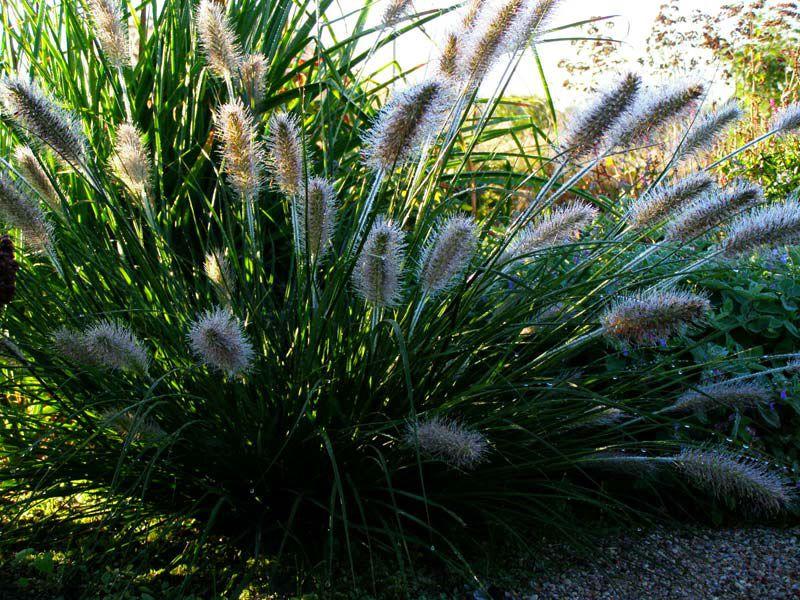
Kinds
Of the many species in the gardens, only a few are cultivated.
Foxtail
The height of the bushes varies between 40-100 centimeters. The color of the fluffy panicles is red-brown or purple. In autumn, foxtail pennisetum changes the color of the plates from green to yellow.
Oriental
The height range of the bushes is from 15 to 80 centimeters. Blooms in August with a pink-purple palette. Growing up, it forms extensive sods.
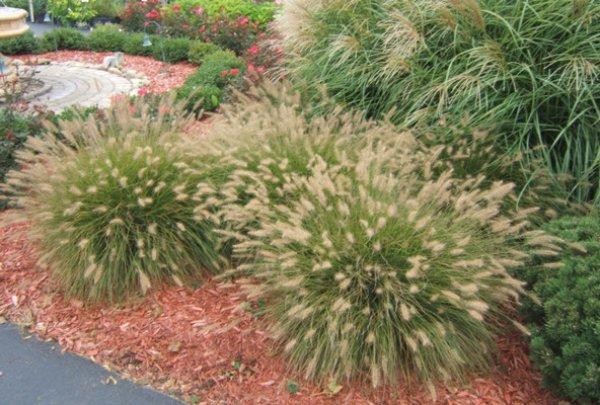
Shaggy
Plantings grow up to half a meter. Paniculate inflorescences have a white-golden color. Often grown as a container plant.
Plain
A tall plant produces erect stems. Spikelets are thin, elongated, appear in June. In autumn, they acquire a yellow-brown color.
Gray
A powerful shrub grows up to 2 meters. Received the name for the wide leaves of a bluish color. Spike-shaped large inflorescences are painted in burgundy-bronze shades.
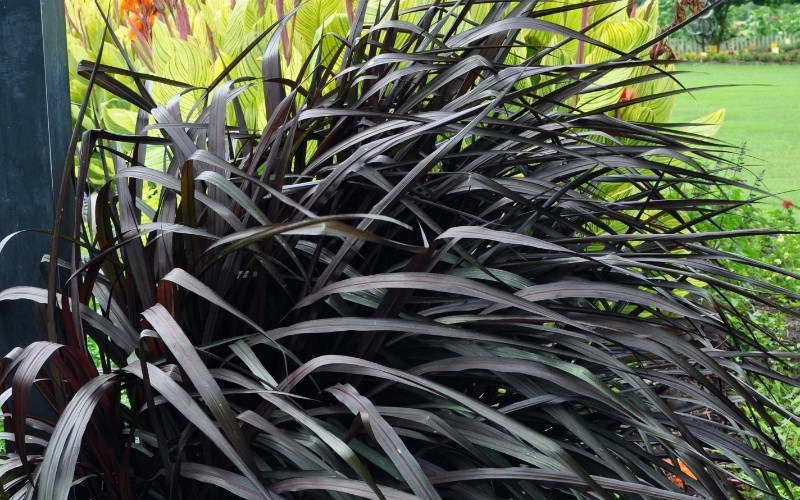
Bristly
Very decorative type of tall pennisetum. Its entire ground part is painted in pink-purple colors. Beautiful inflorescences are used in winter bouquets.
Popular varieties
Below are the most famous varieties that are in demand among gardeners.
Hameln
This variety belongs to the leaf-tailed pennisetum. He has elongated spikelets with a light color. The leaves are narrow, rough to the touch.
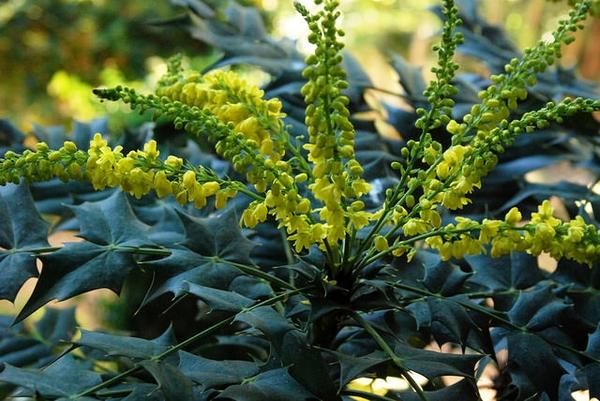
Red Head
The bush is spherical, a large number of trunks with smoky purple spikelets grow from its base. The leaves are narrow, long, their color is gray-green.
Purple baron
This is one of the varieties of blue-gray pennisetum. Trunks and leaves are green with a purple bloom. The color of the long spikelets is ruby-purple, their ends are whitish.
Maudry
Pennisetum fox-tailed variety Maudry is decorated with pink-purple spikelets. Leaves are light green with purple splashes. The bush grows up to 90 centimeters.

Rubrum
All parts of the bristly Rubrum pennisetum are colored red-violet. While developing, paniculate inflorescences create a kind of fountain.
Viridescens
The dense leaves of this variety are green at the beginning of the growing season, then they acquire a purple color. Panicles of inflorescences in the pennisetum of foxtail Viridescens are black-purple, slightly arcuate. The height of the bush is 70 centimeters.
Ornamental
Pennisetum gray Ornamental grows to a height of 1 meter in height and 40 centimeters in width. It has wide, gray-green leaves. The dense spikelets are purple.
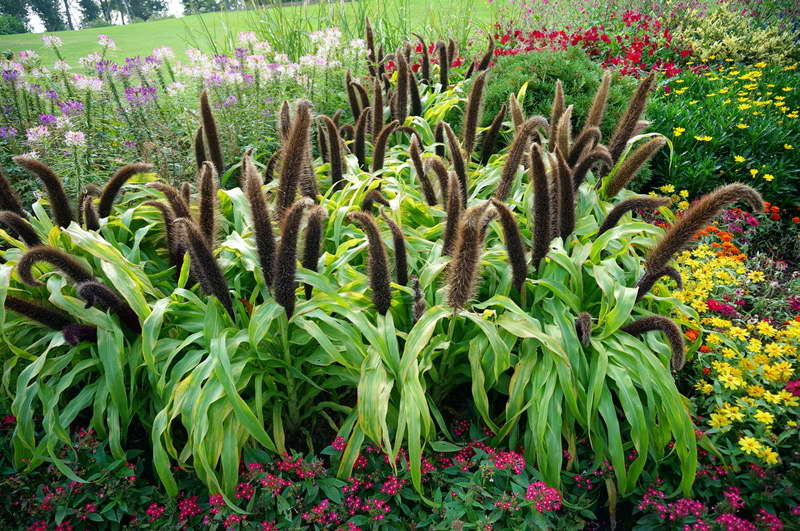
Moudry
The root rosette of the foxtail variety Maudri pennisetum consists of green leaves and pink-smoky spikelets. Inflorescences are large, fluffy, densely cover the bush.
Hameln
Pennisetum foxtail Hameln consists of narrow green leaves that change color to yellow in autumn. The color of the spikelets is light cream or beige. Well tolerates winter.
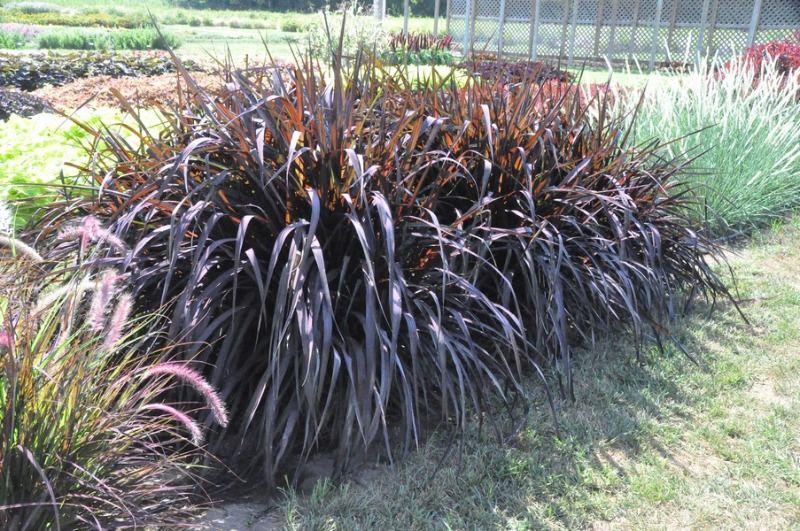
Use in landscape design
Pennisetum foxtail is used on the site as follows:
- As a soil strengthening material on slopes.
- It is planted on the banks of water bodies, forming a natural landscape.
- Serves as a backdrop for low-growing flowering plants.
- Planted as a foreground for taller flowering shrubs.
- Used to create smooth transitions in flower beds.
- It is planted singly against the background of the lawn.
- Grown in large flowerpots. For the winter, plants can be brought into a cool room.
Pennisetum foxtail goes well with the surrounding plantings, it looks spectacular, and caring for it is easy. For these qualities, gardeners loved him, using it in various compositions on their plots.
